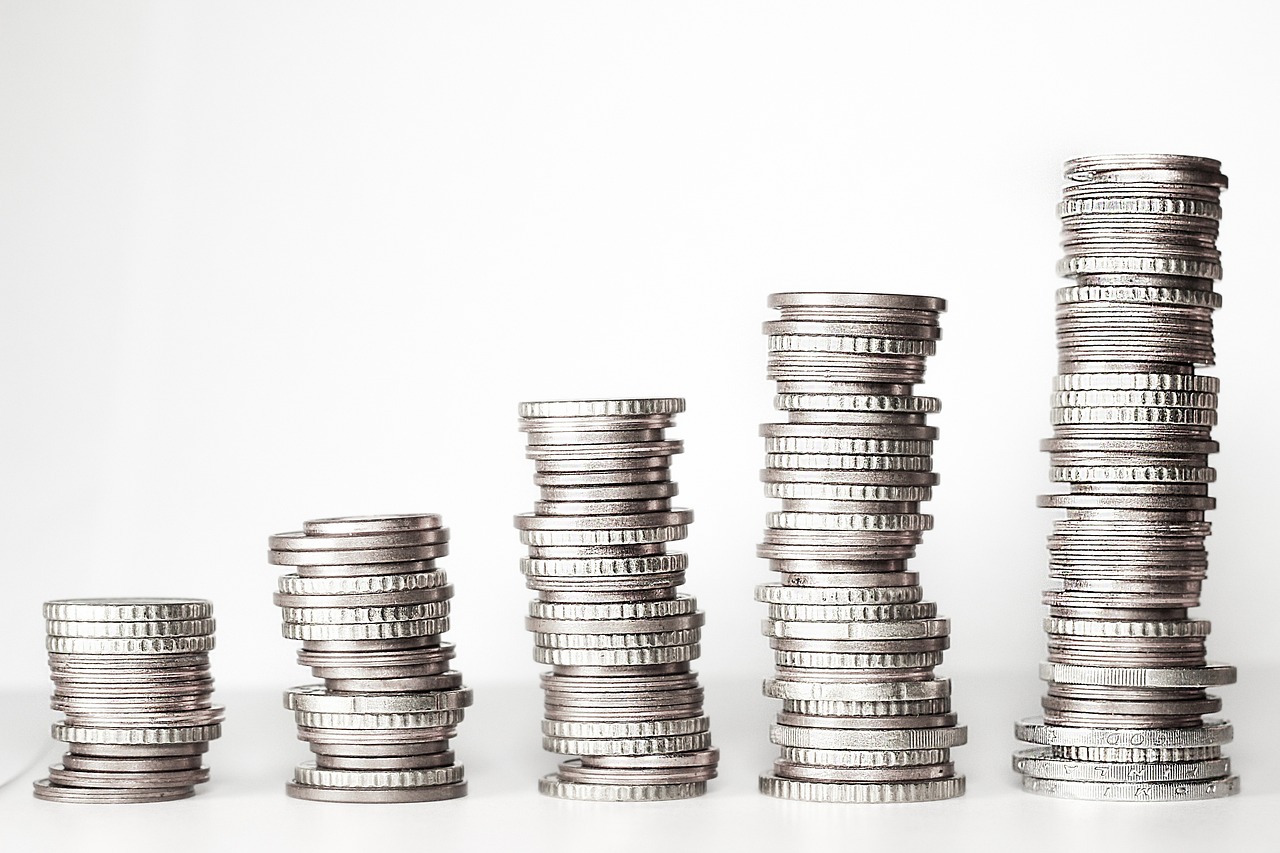Should we all be saving our change for the end of the world? I was a little surprised to learn about this trend for hoarding nickels. Naturally, I had to learn more since anything useful, that might help people survive is worth knowing about. It seems like an oddball item to keep around even if you’ve seen the Resident Evil series too many times and have stacks of quarters saved for your shotgun.
Why do preppers hoard nickles? Whether it’s for melting down into copper and nickel later or for straight barter, nickels have value. Sadly, it’s not enough to make them worth holding on to unless you’re buying in bulk and sorting out the occasional rare coin now.
What’s In a Nickel
Nickels, unless you happen to find a silver nickel, are made of twenty-five percent copper and seventy-five percent nickel. They weigh five grams. The substance is a composite called cupro-nickel, so you won’t find a copper core if you cut into the coin. Most coins in the US are copper, nickel, and zinc. However, nickels don’t use zinc.
Copper
Copper has always been highly prized, though not quite as much as silver and gold. Coins have been made from this element virtually since coins were invented sometime around the 5th or 6th century BCE.
Because of it’s electrical and thermal conductivity copper is used in many everyday items. You’ll find it in everything from wires for your earbuds to pots and pans. As of the time I wrote this copper is worth about $2.82 per pound, but the value varies up and down depending on supply and demand.
Had you sold off a stash of melted copper back in 2010, you’d have made as much as $4.50 a pound for your hoarded investment. Alternately, in January of 1961, it was at an incredible low of just twenty-seven cents a pound. You could have built a giant copper statue for only a few dollars.
Nickel
Nickel is also an element. In fact, it’s the fifth most commonly occurring element on earth. The crust of our planet is about 80ppm nickel. Furthermore, asteroids often have a high concentration of nickel. It’s physical and chemical properties are outstanding.
- Corrosion Resistant
- Fully Recyclable
- Highly Ductile (It makes excellent thin wire)
- Capable of Electroplating
- Catalytic Properties
- Magnetic at Room Temperature
- High Melting Point (1453°C)
- Alloys Readily
Cupro-nickel is one of the many alloys we make from nickel. The sheer versatility and availability of Nickel mean hundreds of thousands of products contain this element. As useful as nickel is, it’s also not too hard to find, which makes it ideal for making coins.
Rare Nickels
Silver nickels are the rare-coin variant that most people are familiar with. From 1942-1945 the US minted silver nickels. These are commonly called Wartime Nickels. The silver Wartime nickels aren’t the only ones with higher than average value.
Along with the Wartime Nickels, lots of misprinted and uncommon nickels are worth more than five cents. It’s not unusual to find coins worth five to twenty dollars if you’re looking out for them. Buffalo Nickels, if they’re in good shape are typically worth around ten cents.
Coins deemed “fine, extremely fine or uncirculated,” can net you a bit more. For example, the 1936 and 37 buffalo nickels are only worth about fifty to sixty cents in good condition, but uncirculated and blemish-free you could get anywhere from nineteen to thirty-three dollars.
Most Valuable Nickels
According to The Spruce Crafts, these ten nickels could make you a staggering amount of cash if you find them. Should you be so lucky, any of the top ten rarest nickels will all net you over a hundred thousand dollars.
- 1913 Liberty Nickel – The Olsen Specimen: $3,737,500
- 1918/7-D Buffalo Nickel – Doubled Die Obverse: $350,750
- 1926-S Buffalo Nickel: $322,000
- 1916 Buffalo Nickel – Doubled Die Obverse: $281,750
- 1913-D Buffalo Nickel – Type 2: $143,750
- 1917-S Buffalo Nickel: $138,000
- 1920-D Buffalo Nickel: $138,000
- 1867 Shield Nickel – Proof with Rays: $132,250
- 1918-S Buffalo Nickel: $125,350
- 1927-S Buffalo Nickel: $125,350
That’s a hefty chunk of change as it were. The chances of finding one of these incredibly uncommon coins are extremely low, but for some, it’s worth the time and effort to try. I certainly wouldn’t blame you for checking your couch cushions and scrutinizing your pocket change more closely from now on.
Indeed, some nickels are worth hoarding for a rainy day, but keep in mind that once society collapses, you probably won’t be able to find a collector who will buy them. Moreover, if you do, make sure they don’t pay cash.
Face Value Vs. Melt Value
For those who might not know the term, he “Face Value” of a nickel is five cents. That hasn’t changed since the founding fathers minted the first modern nickels in 1865. There were earlier five-cent pieces called “Half Disme” which may have originated from George and Martha Washingtons own silverware, but that’s a whole different article.
The relative value of nickel has changed a great deal over the intervening years. Furthermore, there have been several iterations like the Buffalo Nickel, but the concept and intention have stayed the same. A nickel is one-twentieth of a dollar, regardless of what that dollar can buy.
The Other Side of the Coin
The Melt Value refers to how much the actual copper and nickel in a nickel coin is worth at current market prices. Melting down coins may be a bit labor-intensive, but is it worth the time? It could be. Last year some experts were claiming the value of copper might go as high as ten dollars a pound.
If you do some quick math, a pound of nickels is worth about $4.50 at face value. It would take four pounds to get a pound of copper, but you’d also have the nickel left over to sell. In 2014 Nickel topped out around $9 per pound, and you’d have three pounds of it out of every four pounds you melted and separated. If the copper were worth ten dollars, then you’d make around thirty-seven dollars for every eighteen dollars worth of nickels you had. That’s more than double your money
Melting Coins
There are two big questions when it comes to physically melting your coins down. First, is it legal? After all, no one wants to go to jail over five cents. Second, should you melt coins? Because it will cost you in time and materials, you should factor that in when estimating the profit.
Illegal Melting
Let me assure you that, to the best of my knowledge, you will not go to jail just for melting US coins. While many countries do have laws against defacing their coinage in such a manner, the US is not currently one of them.
According to the Legal Information Institute, US Code 18, Section 331 says the following:
“Whoever fraudulently alters, defaces, mutilates, impairs, diminishes, falsifies, scales, or lightens any of the coins coined at the mints of the United States, or any foreign coins which are by law made current or are in actual use or circulation as money within the United States; or
Whoever fraudulently possesses, passes, utters, publishes, or sells, or attempts to pass, utter, publish, or sell, or brings into the United States, any such coin, knowing the same to be altered, defaced, mutilated, impaired, diminished, falsified, scaled, or lightened—
Shall be fined under this title or imprisoned not more than five years, or both.”
In short, you can melt coins as long as you don’t use them to make fake coins or commit fraud.
Should I Melt Nickels
Okay, let’s be honest here. If the melt value is above the face value and you have sufficient equipment to melt and separate the metals, then it’s probably worth melting your nickels. However, while the government is still standing, you are holding a “hedge against deflation.”
To make a long explanation short, barring a second Great Depression, the value of a nickel will always equal five cents at the bank. Leaving them in this form means you can cash them in for five cents worth of anything you need regardless of what the metal is worth. That means when the value of nickel and copper is less than five cents, a nickel stays the same value.
Sure, you could melt them all down, but if you’re going to hoard them, you should leave them in their current form until and unless the metals are sufficiently valuable to justify the time, materials, and labor are worth less than that chunk of melted nickel. It could be worth it at some point, but there are more straightforward ways to make money. Spend those nickels on learning a skill you can trade instead. Just make sure you check for any rare coins before you spend the rest.
Final Thoughts
There are easier and less bulky items to hoard if you’re trying to get the most bang for your buck where prepping is concerned. However, there’s some evidence that hoarding nickels could be useful. It’s probably more helpful to spend more of your focus on acquiring skills and developing them to the point where you can trade yourself even if you lose everything.
Checking your change for especially valuable coins isn’t a terrible waste of time, but keeping nickels long term is iffy. You’ll have to come to your own conclusions.


